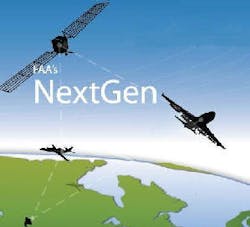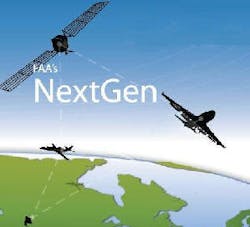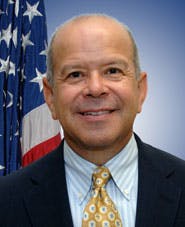FAA Administrator Huerta on NextGen ATC: ‘A lot is at stake, and we need to get this right’
WASHINGTON, 15 April 2015. Federal Aviation Administration (FAA) Administrator Michael Huerta testified before Chairman Thune, Ranking Member Nelson, and members of the Senate Commerce Committee on the reauthorization of the FAA, crediting government and industry for partnering to upgrade and future-proof the aviation system in the U.S. He also acknowledged the FAA’s continuing work on transforming the national airspace system (NAS), including En Route Automation Modernization (ERAM), a new high altitude air traffic control system that accommodates NextGen technologies and replaces a legacy system from the 1960s.
Huerta’s speech follows:
“It seems like not long ago, we were united with a shared sense of urgency to provide the necessary framework and structure to support our nation’s aviation system, as part of the FAA reauthorization of 2012. And now we are here again to continue that work. Government and industry have a shared responsibility to create the aviation system that will carry this nation well into the 21st century.
The FAA has made major progress in transforming our airspace system through NextGen, and that progress continues as we speak.
I am very proud to announce that we achieved a major milestone last month by completing one of the largest automation changeovers in the history of the FAA. We have completed our new high altitude air traffic control system – known as ERAM. This system will accommodate the technologies of NextGen, giving the United States a more powerful air traffic system.
This upgrade is complete now because we introduced a great deal of discipline and structure to the way we do business at the FAA. In 2012, we created a Program Management Organization to better manage the deployment of this and other technology. We also worked closely with our employees – those who will use the system – to gain insight and to make alterations ahead of time for a smooth transition. The fact that we turned ERAM around, and that it is now operating nationwide, is a testament to what the FAA can accomplish as an agency when it sets milestones and pulls together as a team to make fundamental changes.
ERAM links seamlessly with another complementary system that makes up the foundation of NextGen. This system is called Automatic Dependent Surveillance – Broadcast, or ADS-B. Last year we finished the coast-to-coast installation of the ADS-B network that will enable satellite-based air traffic control. ADS-B provides a more precise and efficient alternative to radar and will create a sea change in how we manage our nation’s air traffic.
With this highly flexible NextGen foundation in place, the FAA has fulfilled an important commitment. We are working with the industry and the general aviation community to help them meet their requirement to equip by 2020.
On a parallel track, through our collaboration with industry, we have identified key priorities in implementing NextGen air traffic procedures. We now have more satellite-based procedures in our skies than radar-based procedures. We created new NextGen routes above our busiest metropolitan areas, saving millions of dollars in fuel burn, shortening flight paths, decreasing carbon emissions and cutting down on delays.
We have accomplished all of this despite a very challenging fiscal backdrop. Prior to 2012, the FAA faced 23 short-term extensions for reauthorization, as well as a lapse in spending authority and a partial furlough. Two years ago, like other federal agencies, we slashed our budget under the sequester and furloughed employees. Later that year, we continued to operate our nation’s air traffic control system and regulate industry safety despite a complete shutdown of the federal government.
What the FAA needs in reauthorization is stability and predictable funding. We also need the flexibility to identify priorities and match our services and infrastructure with the needs of our users.
It bears emphasizing that the FAA is a 24-seven operation, singularly focused on safety. I think everyone has acknowledged that the funding piece has been challenging in the last five years. There is talk about restructuring the FAA as part of this reauthorization. I am all for having that discussion, but the discussion needs to be based on facts. We need to be sure that any governance changes would work to solve the challenges faced by the FAA.
Our aviation system is a valuable asset for the American public that contributes 12 million jobs and $1.5 trillion to our economy. We should use the upcoming reauthorization to provide the FAA with the tools necessary to meet the demands of the future. A lot is at stake, and we need to get this right.”



